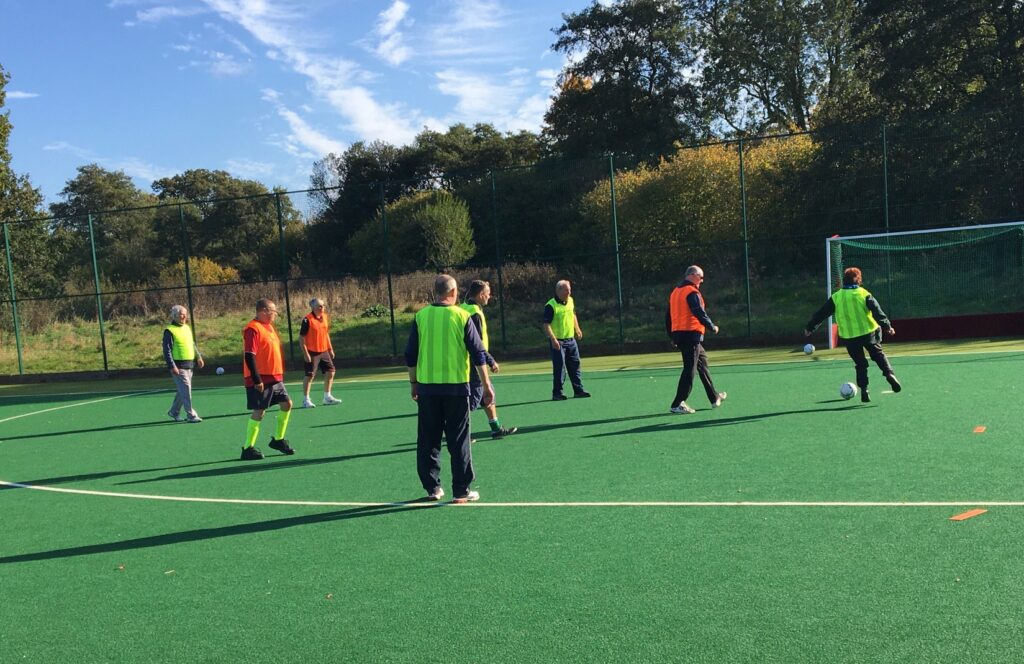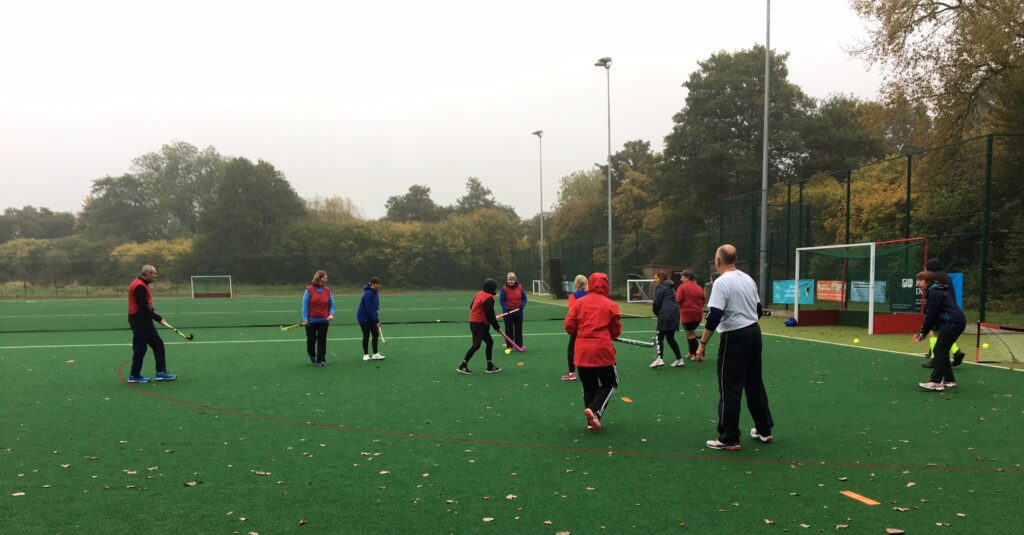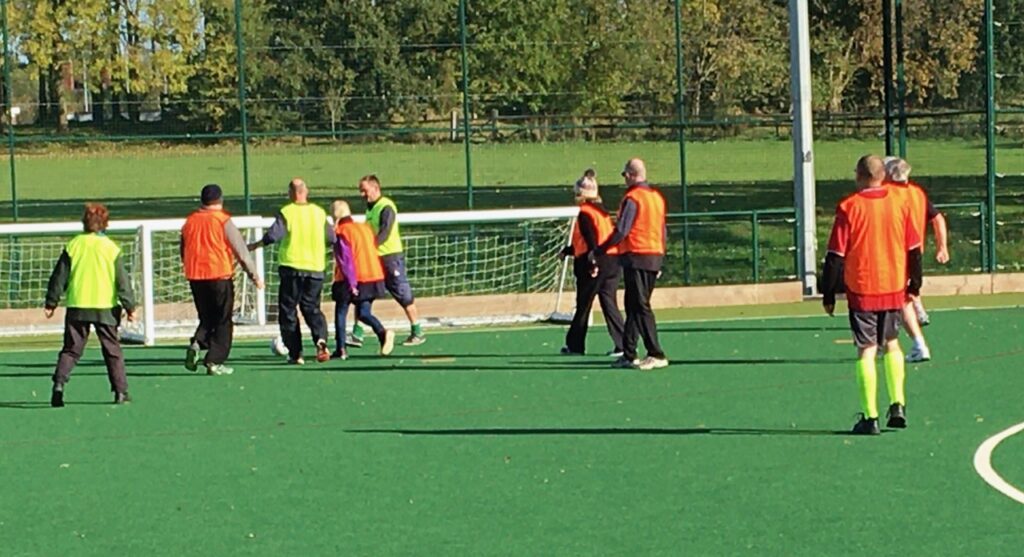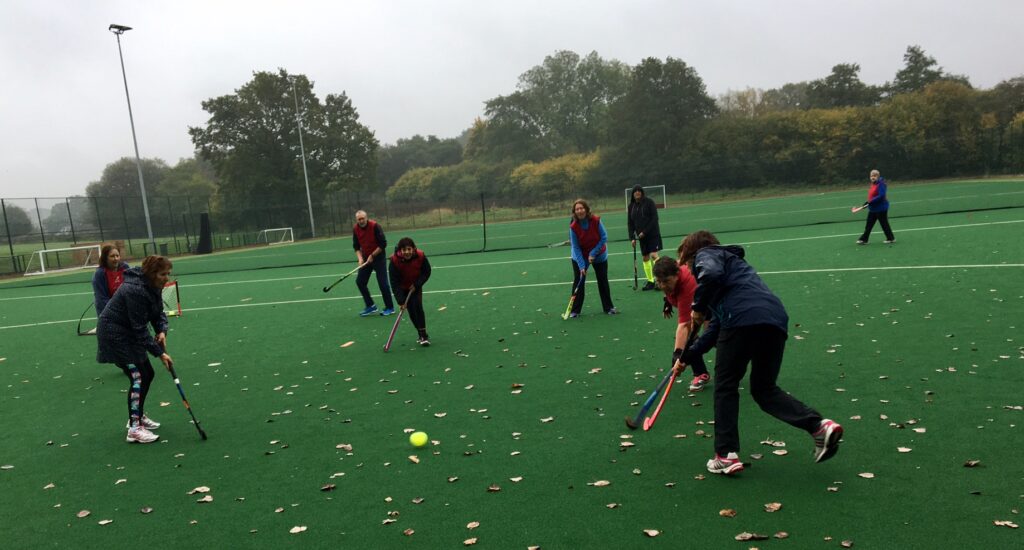Alan Gormley is know within the field hockey community for introducing and developing the Walking Hockey Programme. The success of this has grown to the point, where other organisations, sports clubs and enthusiasts have taken up the idea. Alan has now decided to expand into other sports.
Walking Hockey started everything off. An older/more experienced lady at the club that Alan was involved in had said that she couldn’t play anymore and that she was going to drop out. This didn’t sit too well with him, so he decided to set up something similar to what he had seen in football. Participants aren’t allowed to run, within this game, the top speed is a brisk walk, akin to a certain foot race that you may have seen at the Olympics. Since the initial acorn of an idea things have grown exponentially. Programmes have been set up and expanded upon across the UK, including four sites in Scotland, five in Wales and at over 50 clubs in England. There has been progress internationally, as well. Modelled on Alan’s idea, Walking Hockey has now been seen in the Netherlands, Australia, New Zealand and as far a field as Dubai. Even the National Governing Bodies of field hockey in Canada and the USA are trialing programmes for their participants.
Off the back to this success, Alan has started up some other sports. He’s looking into Walking Sport Programmes for tennis and cricket, but football is starting to pick up quite well recently. At the time of the interview (October 2019), he and his team mates were into their second week of participation. At this point we have a conversation about the mental and physical health benefits for this. Even though most of those who turn up have been told, or feel that they are no longer able to run they can still move about and socialise, keeping the cognitive skills active and exercising in a manner that suits the individual. Alan tells me that at the football initiative a fellow with Alzheimer’s came along in the first week. He did so again the following week and remembered Alan’s name. This man’s wife came over at the end of the practice to speak of her pleasant surprise at her husband’s recall. Due to his condition, one that they had been living with for a number of years, they had been looking for an outlet for a while. Apparently, this guy had been excitedly getting ready for two days and that they will definitely be coming down again. With Alzheimer’s repetition of familiar things from the person’s youth can have benefits on his or her life, as can some light exercise. Therefore Walking Sports can provide improvements to the standard of life, not only for those suffering from the condition, but also those around them. Alan has been working alongside social support departments within the National Health Service in order to provide a ‘holistic toolset’ for those who come down, with a view of providing a part of the jigsaw towards a healthy lifestyle for people with particular needs.
When it comes to tournaments there has been some interesting developments. In terms of codification there has been suggestions posted online about how to play, but with an ethos that it can be changed or adapted in order to suit individual circumstances; length of games and the size of the pitch, differing levels of competitiveness, etc… Alan is worried that if he forced an overarching set of rules then this inflexibility would put people off playing. When people meet up and come together for tournaments, the set of ‘guidelines’ are used for everybody to play by. In addition to this, the word of tournament isn’t actually used at all, with ‘festival’ being preferred instead. Scores aren’t kept and the event is organised on more of a social basis than a competitive one. The motto is “Fun, Friendship and Fitness” and Alan makes the point of it being in that order – it has to be fun.
In terms of cricket and tennis, Alan is contemplating how best to adapt these into Walking Sports. One idea is to look at how Paralympic rules for Tennis, with the two bounces allowed before the ball is hit. Alternatively, unlimited bounces of the ball until it becomes stationary is something else being thought about. I get the sense from him, however, that there will need to be a degree of trial and error as well as adaptation that happens here, in order to find a model that works for those involved.
There is also a training element to this as well. When there are games involving a variety of physical and mental conditions, including age and speed people become aware of each others abilities. For the younger participants in particular, this can provide a very important learning curve for positional awareness. When speed, strength and power is taken out of a game, mental, tactical and technical attributes are highlighted. If you are good at these things then you will adapt well to something like Walking Football, or Hockey. If you’re not as experienced as some other (potentially older) participants then you might find yourself on a steep learning curve. If you are unable to run, then a poor sense of positioning will hold you back. Alan talks of an example of this through his own personal experience, when he went over to promote Walking Hockey in Australia and was asked to lead a training session with a local representative youth team. He says that because their abilities were already of a good standard, these young players coped fairly well, but there could easily be other occasions, or situations where people might struggle, as in you can’t make up for being in the wrong place by sprinting twenty yards. It defiantly sounds like it could be harder than at first impression.
For more information on Alan and his projects, you can check out the information at, Walking Sports ℅ Sports Edge Coaching.

Action from Bromsgrove’s second Walking Football session.
Action from Bromsgrove’s second Walking Football session.



